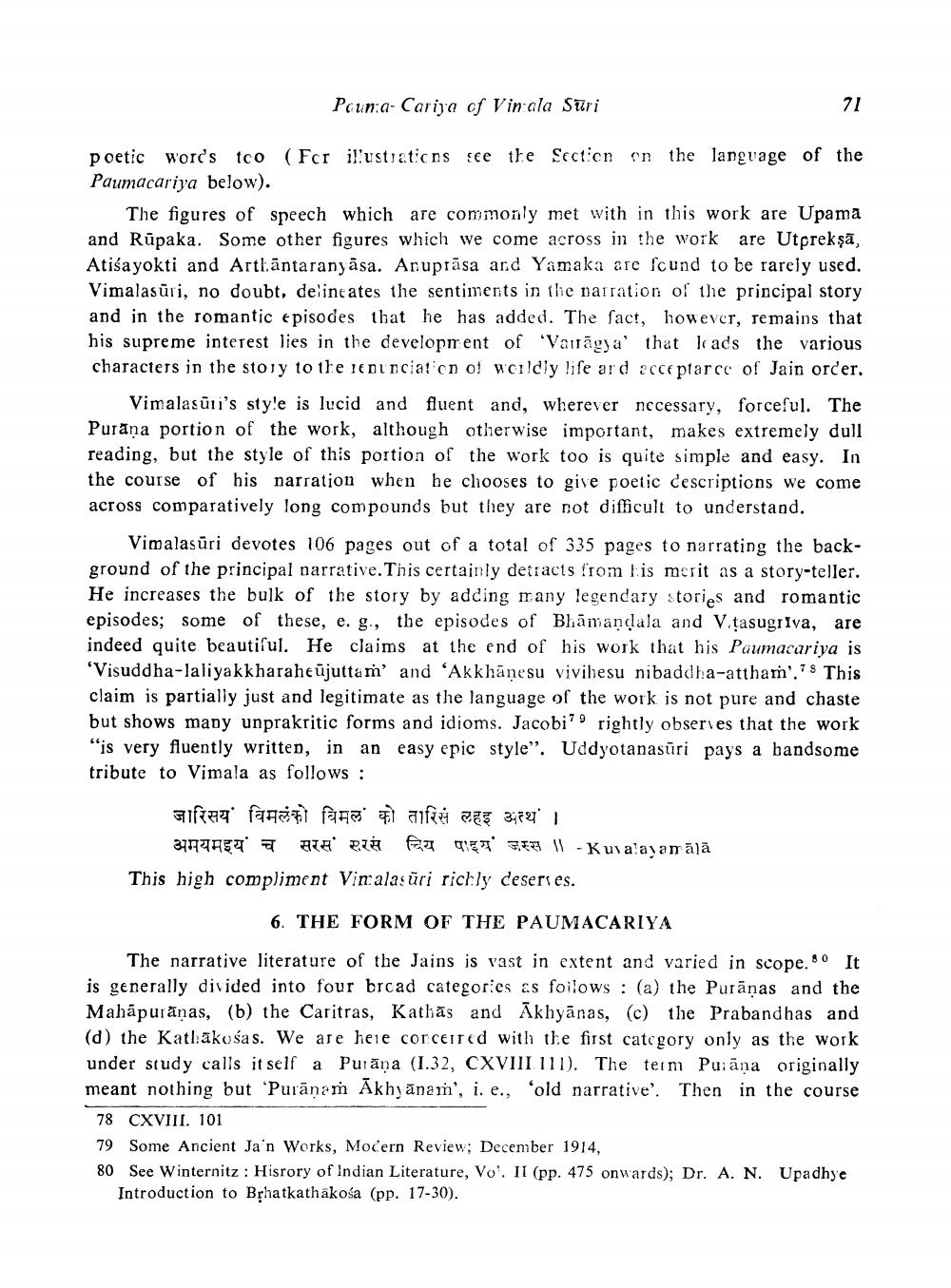________________
Pouna Carlya of Vinala Suri
poetic word's too (For illustrations see the Section on the language of the Paumacariya below).
71
The figures of speech which are commonly met with in this work are Upama and Rūpaka. Some other figures which we come across in the work are Utprekṣā, Atisayokti and Arthäntaranyasa. Anupräsa and Yamaka are found to be rarely used. Vimalasuri, no doubt. delineates the sentiments in the narration of the principal story and in the romantic episodes that he has added. The fact, however, remains that his supreme interest lies in the development of Varragya that kads the various characters in the story to the renunciation of worldly life ard acceptarce of Jain order.
Vimalasuri's style is lucid and fluent and, wherever necessary, forceful. The Purana portion of the work, although otherwise important, makes extremely dull reading, but the style of this portion of the work too is quite simple and easy. In the course of his narration when he chooses to give poetic descriptions we come across comparatively long compounds but they are not difficult to understand.
Vimalasuri devotes 106 pages out of a total of 335 pages to narrating the background of the principal narrative. This certainly detracts from his merit as a story-teller. He increases the bulk of the story by adding many legendary stories and romantic episodes; some of these, e. g., the episodes of Bhamandala and V.tasugrīva, are indeed quite beautiful. He claims at the end of his work that his Paumacariya is 'Visuddha-laliyakkharaheujuttam' and 'Akkhānesu vivihesu nibaddha-attham'. This claim is partially just and legitimate as the language of the work is not pure and chaste but shows many unprakritic forms and idioms. Jacobi rightly observes that the work "is very fluently written, in an easy epic style". Uddyotanasüri pays a handsome. tribute to Vimala as follows :
जारिसय विमलंको विमल को तारिसं लहइ अत्थ । अमयमइया च सरसर दिया
This high compliment Vimalasuri richly deserves.
| Kuvalasanmala
6. THE FORM OF THE PAUMACARIYA
The narrative literature of the Jains is vast in extent and varied in scope.80 It is generally divided into four broad categories as follows: (a) the Puranas and the Mahapuranas, (b) the Caritras, Kathas and Akhyānas, (c) the Prabandhas and (d) the Kathakosas. We are here corcerred with the first category only as the work. under study calls itself a Purana (1.32, CXVIII 111). The term Puana originally meant nothing but 'Purāṇam Akhyānam', i. e., 'old narrative'. Then in the course
78 CXVIII. 101
79 Some Ancient Ja'n Works, Modern Review; December 1914,
80 See Winternitz: Hisrory of Indian Literature, Vo'. II (pp. 475 onwards); Dr. A. N. Upadhye Introduction to Bhatkathakola (pp. 17-30).




